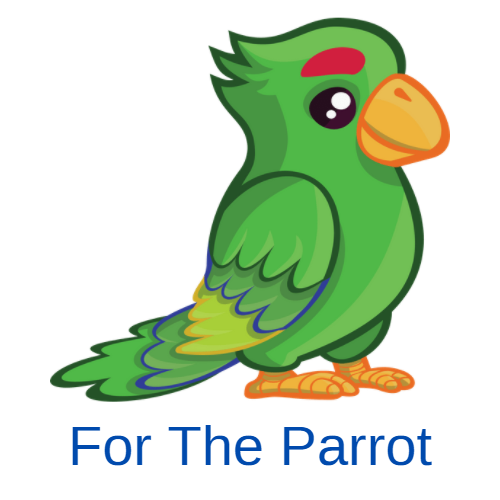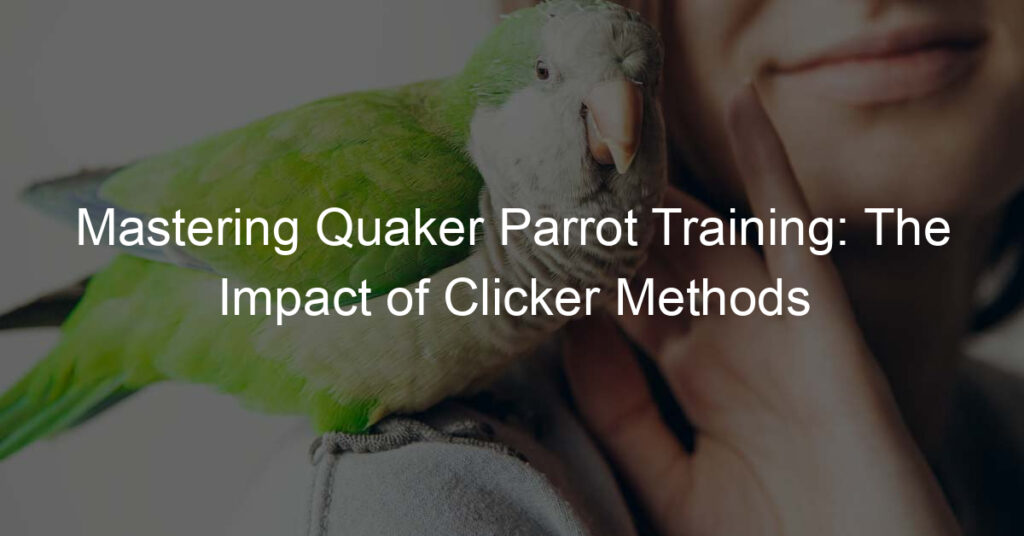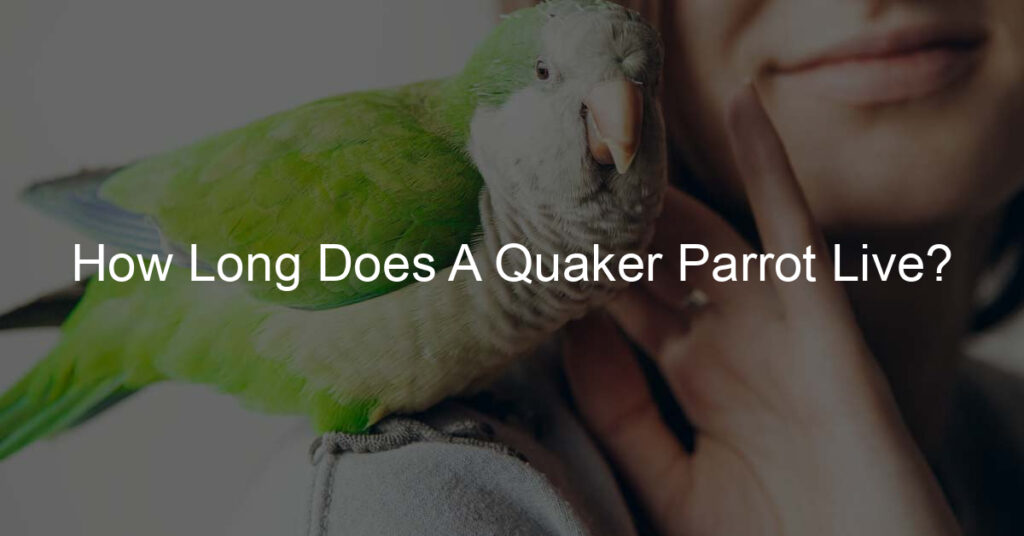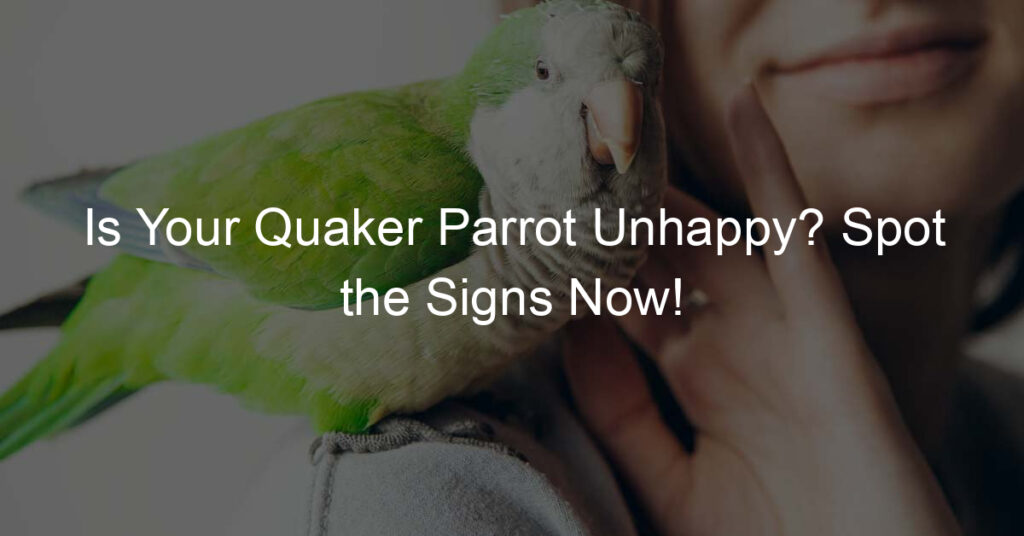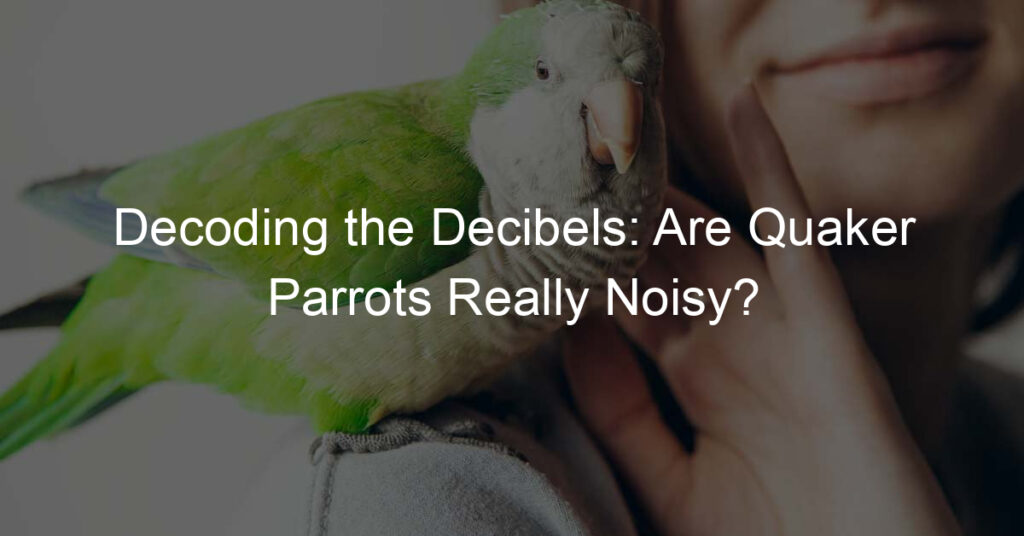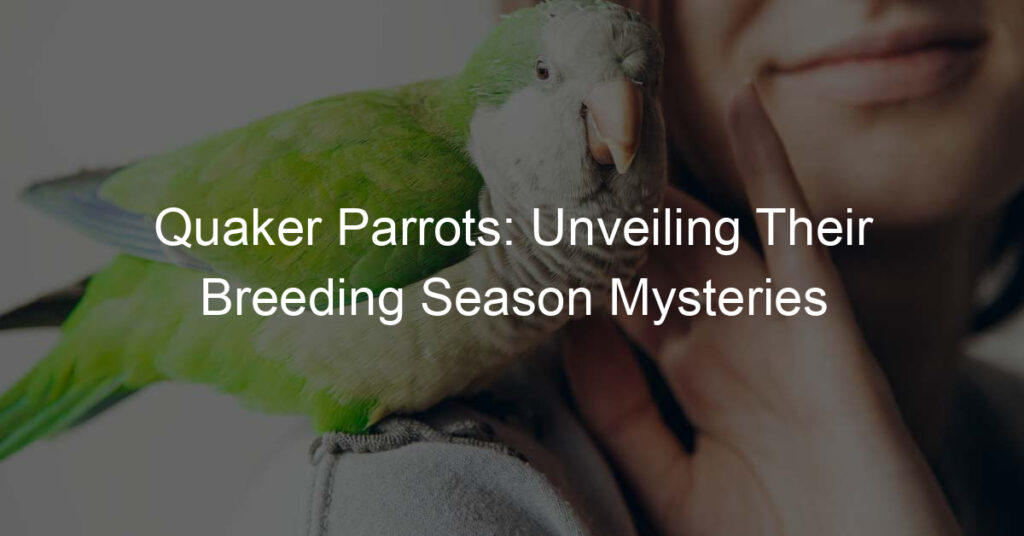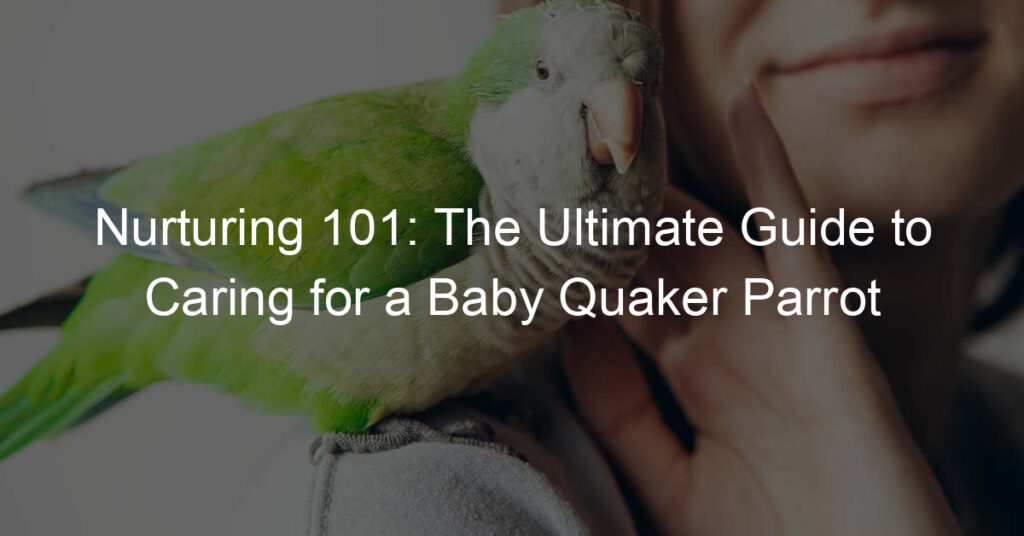
Introduction to Quaker Parrots
Quaker Parrots, also known as Monk Parakeets, are intelligent, social, and lively birds that are native to South America. They are known for their distinctive green color, blue-tipped wings, and their ability to mimic human speech. These parrots are not just beautiful; they are also full of personality and can make wonderful pets if cared for properly.
- Understanding Quaker Parrots behavior
- Basic Quaker Parrot care
Quaker Parrots are known for their playful and energetic behavior. They are highly social creatures and thrive on interaction and companionship. They love to play, climb, and explore their surroundings. Quaker Parrots are also known for their ability to mimic human speech, which can be both entertaining and surprising for their owners. They can learn a variety of words and phrases, and some have even been known to sing songs!
Proper care for a Quaker Parrot involves providing a balanced diet, a clean and safe living environment, and plenty of social interaction. They should be fed a diet of high-quality parrot pellets, fresh fruits, and vegetables. Their cage should be spacious and filled with toys and perches to keep them entertained. Regular vet check-ups are also essential to ensure their health and well-being.
Understanding and caring for a Quaker Parrot can be a rewarding experience. These birds are full of personality and can bring joy and companionship to their owners. However, they also require a significant amount of care and attention. Therefore, it’s important to do your research and understand what owning a Quaker Parrot entails before bringing one into your home.
| Quaker Parrot Facts |
|---|
| Lifespan: 20-30 years |
| Diet: Parrot pellets, fresh fruits, and vegetables |
| Behavior: Social, playful, and intelligent |
| Special Feature: Ability to mimic human speech |
Basics of Parrot Training Methods
Training a parrot can be a rewarding experience for both the bird and its owner. It requires patience, consistency, and understanding. Let’s explore the basic techniques used in parrot training.
- Traditional Bird Training Techniques
Traditional bird training techniques are based on the principles of reward and punishment. When a bird performs a desired behavior, it is rewarded with a treat or praise. Conversely, undesirable behaviors are discouraged with a lack of reward or a mild punishment.
For example, if you’re teaching your parrot to step onto your hand, you would reward it with a treat each time it does so. If it refuses, you simply withhold the treat. Over time, the parrot learns to associate stepping onto your hand with receiving a treat, and will be more likely to do so.
Remember, the key to successful training is consistency. Always reward good behavior immediately, and never reward bad behavior. This helps the bird understand what is expected of it.
- Modern Approaches to Training Quaker Parrots
Modern training methods for Quaker parrots focus more on positive reinforcement and less on punishment. These methods are designed to build a strong bond between the bird and its owner, and to make training a fun and enjoyable experience for the parrot.
One popular modern training method is clicker training. This involves using a small device that makes a clicking sound to signal to the bird that it has performed a desired behavior. The click is immediately followed by a reward, such as a treat or praise. Over time, the bird learns to associate the sound of the click with a reward, and will be more likely to repeat the behavior in the future.
Another modern approach is target training. This involves teaching the bird to touch a specific object (the target) with its beak. Once the bird has mastered this, the target can be used to guide the bird to perform more complex behaviors.
These modern training methods are effective and humane, and can make the training process a positive and enjoyable experience for both the bird and its owner.
Introduction to Clicker Training for Parrots
Clicker training is a popular method used to train various types of pets, including dogs, cats, and even parrots. It’s a simple and effective technique that can help you communicate with your parrot in a way that’s both fun and rewarding for both of you. Let’s delve deeper into what clicker training is and why it’s beneficial for parrots.
- What is Clicker training?
- Why use Clicker training for parrots?
Clicker training is a positive reinforcement method used in animal training. It involves using a small device that makes a distinct ‘click’ sound. This sound is used to signal to the animal that they have performed a desired behavior, followed by a reward. The ‘click’ serves as a bridge between the behavior and the reward, helping the animal understand exactly what action has earned them the treat. This method is based on the science of behavior, where positive reinforcement is the most effective way to teach new behaviors.
Parrots are intelligent creatures, capable of learning a wide variety of behaviors and tricks. Clicker training is particularly effective for parrots for several reasons. First, it allows for clear communication between you and your parrot. The distinct ‘click’ sound is unique and consistent, making it easy for your parrot to understand when they’ve done something right. Second, it makes training more enjoyable for your parrot. Since the training involves rewards, your parrot will be more motivated to learn. Lastly, clicker training can help build a stronger bond between you and your parrot, as it involves positive interactions and mutual understanding.
In the following sections, we will delve deeper into the effectiveness of clicker training and how you can use advanced techniques to train your parrot. Stay tuned!
Effectiveness of Clicker Training
Clicker training has become a popular method for teaching parrots new behaviors. But how effective is it really? Let’s delve into some case studies to find out.
Case Studies on Clicker Training Effectiveness
Two case studies in particular highlight the effectiveness of clicker training for parrots.
- Case Study 1:
- Case Study 2:
In this study, a young Quaker parrot named Charlie was taught to perform tricks using clicker training. Within just a few weeks, Charlie was able to perform complex tricks like spinning in a circle and waving on command. The researchers noted that Charlie seemed to enjoy the training sessions and was eager to participate.
The second study involved a group of older parrots who had never been trained before. Despite their age, the parrots were able to learn new behaviors using clicker training. The researchers found that the parrots responded well to the positive reinforcement provided by the clicker, and they were able to learn at a similar pace to younger parrots.
These case studies show that clicker training can be an effective method for teaching parrots new behaviors, regardless of their age or previous training experience. The key is consistency, patience, and positive reinforcement.
Key Takeaways from Clicker Training Studies
- Takeaway 1: Clicker Training Enhances Learning Speed
- Takeaway 2: Clicker Training Promotes Positive Behavior
One of the most significant findings from clicker training studies is that it can considerably speed up the learning process for parrots. In fact, studies have shown that parrots trained with clickers can learn new behaviors up to 50% faster than those trained using traditional methods. This is because the clicker provides a clear, immediate signal that the parrot has performed the desired behavior, making it easier for them to understand what they are being rewarded for.
Another key insight from these studies is that clicker training can be an effective tool for promoting positive behavior in parrots. This is because the clicker is used to reinforce positive behaviors, which helps to discourage unwanted behaviors. For example, if a parrot is trained to step onto a perch when it hears the clicker, it will be less likely to fly around the room and cause a mess. Over time, this can lead to a significant improvement in the parrot’s behavior.
Advanced Parrot Training
As your parrot matures and becomes more comfortable with basic training, it’s time to introduce advanced techniques. These methods will help your bird develop higher cognitive skills and improve its overall behavior. Let’s delve into advanced clicker training techniques.
Advanced Clicker Training Techniques
Clicker training is a powerful tool for teaching your parrot new behaviors. It uses a distinct sound, a click, to mark the moment your bird does something right. Once your parrot has mastered the basics, you can move on to more advanced techniques.
- Technique 1: Shaping
- Technique 2: Targeting
Shaping involves breaking down a complex behavior into smaller steps. You start by rewarding your parrot for any action that’s even slightly related to the desired behavior. Gradually, you only click and treat when your bird performs actions closer to the final behavior. For example, if you want your parrot to learn to ring a bell, start by rewarding it for looking at the bell, then for moving towards it, and so on.
Targeting is teaching your parrot to touch a specific object with a part of its body, usually its beak. You can use a target stick, a chopstick, for example, and reward your bird every time it touches the stick with its beak. Once your parrot has mastered this, you can use the target stick to guide your bird to perform various actions or go to specific locations.
Remember, patience is key when it comes to advanced parrot training. It might take some time for your bird to understand and perform these behaviors consistently, but the end result is definitely worth the effort.
Other Advanced Parrot Training Methods
While clicker training is a popular method for teaching your parrot new tricks and behaviors, there are other advanced methods that can be just as effective. Let’s explore two of them:
- Method 1: Target Training
- Method 2: Mimicry Training
Target training is a method where you use a stick or a similar object as a ‘target’ for your parrot to follow. This method is often used to teach parrots to fly to a specific location or to perform complex tricks. To start target training, you need to first teach your parrot to touch the end of the stick with its beak. Once your parrot has mastered this, you can gradually move the stick further away, encouraging your parrot to follow it.
Parrots are natural mimics, and this can be used to your advantage in training. Mimicry training involves teaching your parrot to copy sounds, words, or actions. This method can be a lot of fun, but it requires patience and consistency. Start with simple sounds or words, and reward your parrot for successful mimicry. Over time, you can introduce more complex sounds or actions for your parrot to copy.
Remember, every parrot is unique and what works for one may not work for another. It’s important to be patient and consistent in your training, and to always end each training session on a positive note. With time and effort, you’ll be amazed at what your parrot can learn!
Conclusion: Mastering Quaker Parrot Training
In this article, we’ve taken a deep dive into the world of Quaker parrot training. We’ve explored the basics, delved into advanced techniques, and highlighted the effectiveness of clicker training. Now, let’s wrap up what we’ve learned.
- Recap of Clicker Training for Parrots
- Final Thoughts on Quaker Parrots Training
Clicker training is a powerful tool in the parrot training arsenal. It’s a positive reinforcement method that uses a clicker to signal to your parrot that they’ve done something right. We’ve learned that it’s not just effective, but it also strengthens the bond between you and your feathered friend.
Remember, patience and consistency are key. Start with simple commands and gradually move to more complex ones. With time, your Quaker parrot will start associating the click sound with a job well done, making training sessions more productive and enjoyable.
Training a Quaker parrot is not just about teaching them tricks or commands. It’s about understanding their unique personalities, needs, and behaviors. It’s about building a relationship based on trust and respect.
Quaker parrots are intelligent, social, and highly trainable. With the right approach, you can help your parrot become a well-behaved, confident, and happy member of your family.
Remember, every parrot is unique. What works for one might not work for another. So, be flexible, be patient, and most importantly, enjoy the journey!
In conclusion, mastering Quaker parrot training is a rewarding experience that requires time, patience, and understanding. But with the right tools and techniques, you can build a strong bond with your parrot and help them reach their full potential.
